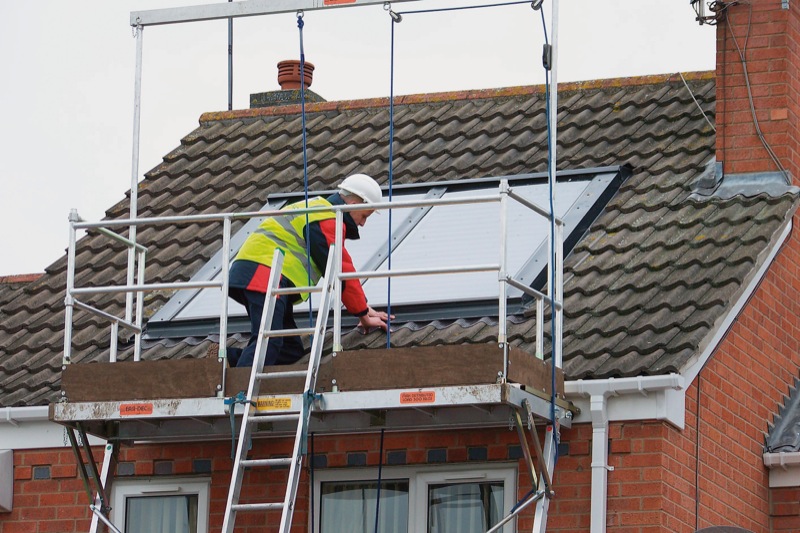Working platform
The term 'working platform' is defined by the Work at Height Regulations 2005 as: '...any platform used as a place of work or as a means of access to or egress from a place of work', including: '...any scaffold, suspended scaffold, cradle, mobile platform, trestle, gangway, gantry and stairway which is so used.'
Before the 2005 Regulations, working platforms were defined as fully-boarded platforms with handrails and toe boards.
For a platform to be suitable for working at height, it must be:
- Of sufficient size to allow safe passage and use of equipment and materials.
- Free from trip hazards or gaps.
- Clean and tidy.
- Fitted with handrails and toe boards if necessary.
- Not overloaded (this is particularly relevant to trestles that are loaded with blockwork).
- Erected on firm level ground to ensure equipment remains stable.
Before working platforms are used they must be inspected carefully to ensure they are fit for purpose and have been properly assembled or installed. If a platform is exposed to conditions that are liable to result in danger or damage, then it must continue to be inspected at regular intervals.
[edit] Related articles on Designing Buildings Wiki
- Construction plant.
- How to remove scaffolding.
- How to use a ladder.
- Lift table.
- Lifting device.
- Lifting platform.
- Mobile elevating work platforms (MEWPs).
- Piling mat.
- Post lift.
- Scaffolding.
- Scissor lift.
- Types of crane.
- Types of scaffolding.
- Work at height.
- Working at height - our duty to prevent harm and protect each other.
- Work at height checklist for managers.
- Work at height regulations.
- Working platforms for tracked plant: good practice guide to the design, installation, maintenance and repair of ground-supported working platforms.
Featured articles and news
Infrastructure that connect the physical and digital domains.
Harnessing robotics and AI in challenging environments
The key to nuclear decommissioning and fusion engineering.
BSRIA announces Lisa Ashworth as new CEO
Tasked with furthering BSRIA’s impressive growth ambitions.
Public buildings get half a million energy efficiency boost
£557 million to switch to cleaner heating and save on energy.
CIOB launches pre-election manifesto
Outlining potential future policies for the next government.
Grenfell Tower Inquiry announcement
Phase 2 hearings come to a close and the final report due in September.
Progress from Parts L, F and O: A whitepaper, one year on.
A replicated study to understand the opinion of practitioners.
ECA announces new president 2024
Electrical engineer and business leader Stuart Smith.
A distinct type of countryside that should be celebrated.
Should Part O be extended to existing buildings?
EAC brands heatwave adaptation a missed opportunity.
Definition of Statutory in workplace and facilities management
Established by IWFM, BESA, CIBSE and BSRIA.
Tackling the transition from traditional heating systems
59% lack the necessary information and confidence to switch.
The general election and the construction industry
As PM, Rishi Sunak announces July 4 date for an election.
Eco apprenticeships continue help grow green workforce
A year after being recognised at the King's coronation.
Permitted development rights for agricultural buildings
The changes coming into effect as of May 21, 2024.






















